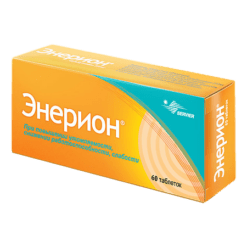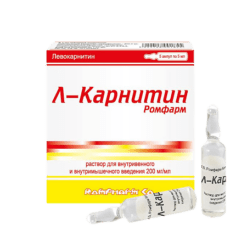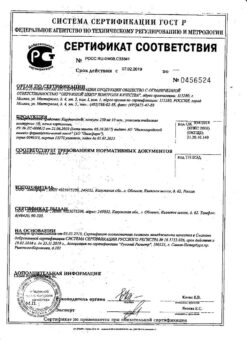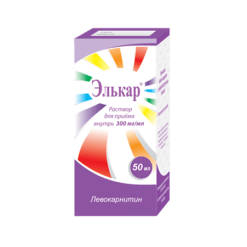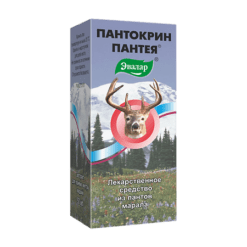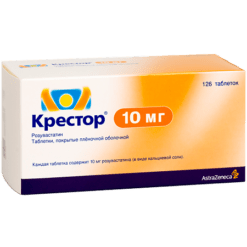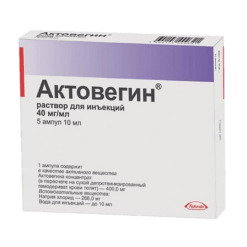No products in the cart.
Milurite, tablets 100 mg 50 pcs
€5.04 €4.48
Description
Pharmacotherapeutic group: antipodagric agent – xanthine oxidase inhibitor
ATC code: M04AA01
Pharmacological properties
Pharmacodynamics:
Allopurinol is a structural analog of hypoxanthine. Allopurinol, as well as its main active metabolite, oxypurinol, inhibit xanthine oxidase, the enzyme that ensures the conversion of hypoxanthine to xanthine, and xanthine to uric acid. Allopurinol reduces the concentration of uric acid in both serum and urine. In this way, it prevents the deposition of uric acid crystals in the tissues and/or promotes their dissolution.
In addition to suppressing purine catabolism in some (but not all) patients with hyperuricemia, large amounts of xanthine and hypoxanthine become available for reformation of purine bases, which leads to inhibition of purine biosynthesis de novo by a feedback mechanism mediated by inhibition of the enzyme hypoxanthine-guanine phosphoribosyl-transferase. Other metabolites of allopurinol are allopurinol riboside and oxypurinol-7 riboside.
Pharmacokinetics:
Intake
Allopurinol is active when administered orally. It is rapidly absorbed from the upper gastrointestinal (GI) tract. According to pharmacokinetic studies allopurinol is determined in the blood within 30-60 minutes after intake. Allopurinol bioavailability varies from 67% to 90%. Maximum plasma concentration of the drug (TCmax) is usually registered approximately 1.5 hours after oral administration.
Allopurinol concentrations then decrease rapidly. Six hours after ingestion, only trace concentrations of the drug are detected in plasma. Maximum concentration (Cmax) of the active metabolite – oxypurinol is usually registered 3-5 hours after oral administration of allopurinol. Plasma concentration of oxypurinol decreases much slower.
Distribution
Allopurinol is almost not bound to plasma proteins, therefore changes in the degree of binding to proteins should not have a significant effect on the clearance of the drug. Apparent volume of distribution (Vd) of allopurinol is approximately 1.6 liters/kg, which indicates quite pronounced absorption of the drug into tissues. The concentration of allopurinol in various human tissues has not been studied, but it is very likely that allopurinol and oxypurinol accumulate in maximum concentration in the liver and intestinal mucosa, where high xanthine oxidase activity is recorded.
Biotransformation
Allopurinol is metabolized by xanthine oxidase and aldehydoxidase to form oxypurinol. Oxipurinol inhibits the activity of xanthine oxidase. However, oxypurinol is not as potent an inhibitor of xanthine oxidase as allopurinol, but its half-life (T½) is much longer. Because of these properties, effective inhibition of xanthine oxidase activity is maintained for 24 hours after a single daily dose of allopurinol.
In patients with normal renal function, plasma concentrations of oxypurinol slowly increase until equilibrium concentration is reached. After administration of allopurinol at a dose of 300 mg per day, the plasma concentration of allopurinol is usually 5-10 mg/l. Other allopurinol metabolites include allopurinol-riboside and oxipurinol-7-riboside.
Approximately 20% of allopurinol taken per os is excreted unchanged in the intestine. About 10% of the daily dose is excreted by the glomerular apparatus of the kidney as unchanged allopurinol. Another 70% of the daily dose of allopurinol is excreted by the kidneys in the form of oxypurinol. Oxipurinol is excreted unchanged by the kidneys, but due to tubular reabsorption it has a long T½. T½ allopurinol is 1-2 hours, whereas T½ oxypurinol ranges from 13 to 30 hours. These significant differences are likely due to differences in patients’ study patterns and/or creatinine clearance (CK).
Patients with impaired renal function
In patients with impaired renal function, excretion of allopurinol and oxipurinol may be significantly delayed, resulting in increased plasma concentrations of these compounds during long-term therapy. In patients with impaired renal function and CK 10-20 ml/min after long-term therapy with allopurinol at a dose of 300 mg per day, plasma concentration of oxypurinol reached approximately 30 mg/l. This concentration of oxypurinol can be detected in patients with normal renal function on the background of allopurinol therapy at a dose of 600 mg per day. Therefore, the allopurinol dose should be reduced when treating patients with impaired renal function.
Elderly patients
In elderly patients significant changes in allopurinol pharmacokinetic properties are unlikely. The exception is patients with concomitant renal pathology .
Indications
Indications
Adults:
· All types of hyperuricemia that cannot be controlled by diet, including secondary hyperuricemia of various origins, and clinical complications of hyperuricemia, in particular, severe gout, urate nephropathy, as well as the dissolution and prevention of the formation of uric acid crystals (kidney stones).
· Treatment of recurrent, mixed calcium oxalate crystals accompanied by hyperuricemia, if drinking various fluids, following a diet and similar measures have no effect.
Children and teenagers:
· Secondary hyperuricemia of various origins.
· Uric acid-induced nephropathy in the treatment of leukemia.
Congenital enzyme deficiency, Lesch-Nyhan syndrome (complete or partial deficiency of hypoxanthine-guanine phosphoribosyltransferase) and adenine phosphoribosyltransferase deficiency.
Pharmacological effect
Pharmacological effect
Pharmacotherapeutic group: anti-gout drug – xanthine oxidase inhibitor
ATX CODE: M04AA01
PHARMACOLOGICAL PROPERTIES
Pharmacodynamics:
Allopurinol is a structural analogue of hypoxanthine. Allopurinol, as well as its main active metabolite, oxypurinol, inhibit xanthine oxidase, an enzyme that converts hypoxanthine into xanthine and xanthine into uric acid. Allopurinol reduces the concentration of uric acid in both serum and urine. Thus, it prevents the deposition of uric acid crystals in tissues and (or) promotes their dissolution.
In addition to the suppression of purine catabolism in some (but not all) patients with hyperuricemia, large amounts of xanthine and hypoxanthine become available for the re-formation of purine bases, resulting in feedback inhibition of de novo purine biosynthesis, which is mediated by inhibition of the enzyme hypoxanthine-guanine phosphoribosyl transferase. Other metabolites of allopurinol are allopurinol riboside and oxypurinol-7 riboside.
Pharmacokinetics:
Suction
Allopurinol is active when administered orally. It is rapidly absorbed from the upper gastrointestinal tract (GIT). According to pharmacokinetic studies, allopurinol is detected in the blood within 30-60 minutes after administration. The bioavailability of allopurinol varies from 67% to 90%. The maximum concentration of the drug in blood plasma (TCmax) is usually recorded approximately 1.5 hours after oral administration.
Allopurinol concentrations then decrease rapidly. 6 hours after administration, only a trace concentration of the drug is determined in the blood plasma. The maximum concentration (Cmax) of the active metabolite, oxypurinol, is usually recorded 3-5 hours after oral administration of allopurinol. The concentration of oxypurinol in blood plasma decreases much more slowly.
Distribution
Allopurinol is almost not bound to plasma proteins, so changes in the degree of protein binding should not have a significant effect on the clearance of the drug. The apparent volume of distribution (Vd) of allopurinol is approximately 1.6 liters/kg, which indicates fairly pronounced tissue absorption of the drug. The concentration of allopurinol in various human tissues has not been studied, but it is very likely that allopurinol and oxypurinol accumulate in maximum concentrations in the liver and intestinal mucosa, where high xanthine oxidase activity is recorded.
Biotransformation
Under the action of xanthine oxidase and aldehyde oxidase, allopurinol is metabolized to form oxypurinol. Oxypurinol inhibits xanthine oxidase activity. However, oxypurinol is a less potent xanthine oxidase inhibitor than allopurinol, but its half-life (T½) is significantly longer. Due to these properties, after taking a single daily dose of allopurinol, effective suppression of xanthine oxidase activity is maintained for 24 hours.
In patients with normal renal function, the plasma concentration of oxypurinol increases slowly until a steady-state concentration is reached. After taking allopurinol at a dose of 300 mg per day, the concentration of allopurinol in the blood plasma is usually 5-10 mg/l. Other metabolites of allopurinol include allopurinol riboside and oxypurinol-7-riboside.
Removal
Approximately 20% of allopurinol taken orally is excreted unchanged through the intestines. About 10% of the daily dose is excreted by the glomerular apparatus of the kidney in the form of unchanged allopurinol. Another 70% of the daily dose of allopurinol is excreted by the kidneys in the form of oxypurinol. Oxypurinol is excreted unchanged by the kidneys, but due to tubular reabsorption it has a long half-life. T½ allopurinol is 1-2 hours, while T½ oxypurinol varies from 13 to 30 hours. These significant differences are likely due to differences in study design and/or creatinine clearance (CC) between patients.
Patients with impaired renal function
In patients with impaired renal function, the elimination of allopurinol and oxypurinol may slow down significantly, which, with long-term therapy, leads to an increase in the concentration of these compounds in the blood plasma. In patients with impaired renal function and CC 10-20 ml/min after long-term therapy with allopurinol at a dose of 300 mg per day, the concentration of oxypurinol in the blood plasma reached approximately 30 mg/l. This concentration of oxypurinol can be determined in patients with normal renal function during therapy with allopurinol at a dose of 600 mg per day. Therefore, when treating patients with impaired renal function, the dose of allopurinol should be reduced.
Elderly patients
In elderly patients, significant changes in the pharmacokinetic properties of allopurinol are unlikely. The exception is patients with concomitant renal pathology.
Special instructions
Special instructions
Drug hypersensitivity syndrome, SJS and TEN (Stevens-Johnson syndrome and toxic epidermal necrolysis)
The manifestations of hypersensitivity reactions to allopurinol can be varied, including maculopapular exanthema, drug hypersensitivity syndrome [DRESS], and SJS/TEN. These reactions are a clinical diagnosis and their clinical manifestations serve as the basis for making appropriate decisions. Treatment with Milurit should be discontinued immediately if skin rash or other manifestations of a hypersensitivity reaction occur. Therapy should not be restarted in patients with hypersensitivity syndrome and SJS/TEN. Glucocorticosteroids may be used to treat hypersensitivity skin reactions.
Allele HLA-B*5801
It was found that the presence of the HLA-B*5801 allele is associated with the development of allopurinol hypersensitivity syndrome and SJS/TEN. The frequency of the presence of the HLA-B*5801 allele varies in different ethnic groups and can reach 20% in the Han Chinese population, 8-15% in Thais, about 12% in Koreans and 1-2% in Japanese and Europeans.
Screening for the HLA-B*5801 allele should be considered before initiating allopurinol treatment in subgroups of patients with a known high prevalence of the HLA-B*5801 allele. Chronic kidney disease may further increase this risk in these patients. If genotyping is not possible in Han Chinese, Thai or Korean patients, allopurinol should only be prescribed if the benefit of treatment outweighs the possible increased risk. The use of genotyping to guide decisions about allopurinol therapy has not been studied in other patient populations.
If the patient is known to be a carrier of the HLA-B*5801 allele (especially Han Chinese, Thais, Koreans), allopurinol therapy should not be initiated unless there are no other possible adequate treatment options.
The development of hypersensitivity syndrome and SJS/TEN should be monitored very closely and patients should be informed of the need to immediately discontinue treatment at the first appearance of such symptoms.
SJS/TEN can also develop in patients who lack the HLA-B*5801 allele, regardless of their ethnic origin.
Chronic renal failure
Patients with chronic renal failure may be at increased risk of developing hypersensitivity reactions, including SJS/TEN, associated with allopurinol, when concomitantly using diuretics, especially thiazide diuretics. Particular vigilance for signs of hypersensitivity syndrome or SJS/TEN is required, and patients should be informed of the need for immediate and permanent discontinuation of allopurinol treatment at the first appearance of symptoms.
Liver or kidney dysfunction
In patients with impaired liver or kidney function, reduced doses of allopurinol should be used. Patients receiving treatment for hypertension or heart failure, such as diuretics or ACE inhibitors, may experience some reduction in renal function. Allopurinol should be used with caution in such patients.
Asymptomatic hyperuricemia
Allopurinol is not indicated in all cases of hyperuricemia that occurs without clinical manifestations. In such cases, improvement in patients’ condition may be achieved through changes in diet and fluid intake along with addressing the underlying cause of hyperuricemia.
Acute attack of gout
You should not start using allopurinol until the acute attack of gout is completely relieved, as this can provoke an additional exacerbation of the disease.
Similar to therapy with uricosuric drugs, initiation of treatment with Milurit® can also provoke an acute attack of gout. To avoid this complication, it is recommended that prophylactic therapy with nonsteroidal anti-inflammatory drugs (NSAIDs) or colchicine be given for at least one month before allopurinol is prescribed. Detailed information about recommended doses, warnings and precautions can be found in the relevant literature.
If an acute attack of gout develops during allopurinol therapy, the drug should be continued at the same dose, and a suitable NSAID should be prescribed to treat the attack.
Azathioprine or 6-mercaptopurine
Allopurinol should not be administered to patients receiving treatment with azathioprine or 6-mercaptopurine unless the dose of these drugs is reduced to 25% of the originally prescribed dose.
Deposition of xanthine
In cases where the formation of uric acid is significantly increased (for example, malignant tumor pathology and corresponding antitumor therapy, Lesch-Nyhan syndrome), the absolute concentration of xanthine in the urine in rare cases can increase significantly, which contributes to the deposition of xanthine in the tissues of the urinary tract. The likelihood of xanthine deposition in tissues can be minimized through adequate hydration, which ensures optimal urine dilution.
Effect on uric acid stones
Adequate therapy with allopurinol can lead to the dissolution of large uric acid stones located in the renal pelvis, with a remote possibility of their entry into the ureters.
When treating gouty kidney damage and urate stones, the daily volume of urine excreted should be at least 2 liters, and the urine pH value should be in the range of 6.4-6.8.
Hemochromatosis
The main effect of allopurinol in the treatment of gout is to inhibit the activity of the enzyme xanthine oxidase. Xanthine oxidase may be involved in the reduction and elimination of iron deposited in the liver. There are no studies demonstrating the safety of allopurinol therapy in the population of patients with hemochromatosis. Patients with hemochromatosis, as well as their blood relatives, should be prescribed allopurinol with caution.
Thyroid dysfunction
Elevated TSH (thyroid-stimulating hormone) values (>5.5 µIU/ml) were observed in patients receiving long-term allopurinol (5.8%) in a long-term open-label extension clinical trial. Caution should be exercised when using allopurinol in patients with thyroid dysfunction.
Lactose
Each 100 mg tablet of Milurit® contains 50 mg of lactose. Therefore, this drug should not be taken by patients with lactose intolerance, lactase deficiency and glucose-galactose malabsorption syndrome.
Impact on the ability to drive vehicles and machinery
During therapy with allopurinol, the development of such undesirable reactions as drowsiness, dizziness (vertigo) and ataxia was observed. These adverse events may affect the ability to drive vehicles and operate machinery. Patients taking Milurit® tablets should not drive vehicles or operate machinery until they are sure that allopurinol does not adversely affect these abilities.
Active ingredient
Active ingredient
Allopurinol
Composition
Composition
For 1 tablet:
active ingredient:
allopurinol 100 mg;
excipients:
lactose monohydrate 50 mg,
potato starch 32 mg,
povidone K-25 6.5 mg, talc 6 mg,
magnesium stearate 3 mg,
sodium carboxymethyl starch (type A) 2.5 mg.
Pregnancy
Pregnancy
Pregnancy
There is currently insufficient data on the safety of allopurinol therapy during pregnancy, although this drug has been widely used for many years without apparent adverse effects. Pregnant women should not take Milurit® tablets unless there is no less dangerous alternative treatment and the disease poses a greater risk to the mother and fetus than taking the drug.
Breastfeeding period
Allopurinol and its metabolite oxypurinol are excreted into human breast milk. The drug Milurit® tablets is not recommended during breastfeeding. In women taking allopurinol at a dose of 300 mg/day, the concentrations of allopurinol and oxypurinol in breast milk reached 1.4 mg/l and 53.7 mg/l, respectively. However, there is no information on the effects of allopurinol and its metabolites on breastfed infants.
Contraindications
Contraindications
Hypersensitivity to allopurinol or any of the excipients included in the drug.
Liver failure, chronic renal failure (azotemia stage), acute attack of gout, children under 3 years of age (taking into account the solid dosage form)
Pregnancy and breastfeeding (see section “Use during pregnancy and breastfeeding”).
Patients with rare hereditary diseases such as lactose intolerance, lactase deficiency and glucose-galactose malabsorption syndrome (tablets contain lactose monohydrate – only for 100 mg tablets.
With caution
Liver dysfunction, hypothyroidism, diabetes mellitus, arterial hypertension, primary hemochromatosis, simultaneous use of angiotensin-converting enzyme (ACE) inhibitors or diuretics, children (up to 15 years of age are prescribed only during cytostatic therapy of leukemia and other malignant diseases, as well as symptomatic treatment of enzyme disorders), elderly age, impaired renal function (impaired renal function can lead to retention of the drug and its metabolites in the body with subsequent prolongation of the half-life of these compounds from the blood plasma).
Side Effects
Side Effects
There are no current clinical data to determine the incidence of side effects. Their frequency may vary depending on the dose and whether the drug was prescribed as monotherapy or in combination with other drugs.
The classification of the frequency of side effects is based on an approximate estimate; for most side effects there is no data to determine the frequency of their development.
The classification of adverse reactions depending on the frequency of occurrence is as follows:
very common (>1/10),
frequent (from >1/100 to <1/10),
uncommon (from >1/1000 to <1/100),
rare (from >1/10,000 to <1/1000),
very rare (< 1/10,000),
frequency unknown (cannot be determined from available data).
Adverse reactions associated with allopurinol therapy observed in the post-marketing period are rare or very rare. In the general patient population, most cases are mild. The incidence of adverse events increases with impaired renal and (or) liver function.
Infections and parasitic diseases:
Very rare: furunculosis.
Disorders of the blood and lymphatic system:
Very rare: agranulocytosis, aplastic anemia, thrombocytopenia, granulocytosis, leukopenia, leukocytosis, eosinophilia and aplasia affecting red blood cells only.
Thrombocytopenia, agranulocytosis and aplastic anemia have been reported very rarely, particularly in persons with impaired renal and/or hepatic function, highlighting the need for special caution in these patient groups.
Immune system disorders:
Uncommon: hypersensitivity reactions; severe hypersensitivity reactions, including skin reactions with epidermal detachment, fever, lymphadenopathy, arthralgia and/or eosinophilia (including Stevens-Johnson syndrome (SJS) and toxic epidermal necrolysis (TEN)) (see section “Skin and subcutaneous tissue disorders”). Associated vasculitis or tissue reactions may have a variety of manifestations, including hepatitis, renal involvement, acute cholangitis, xanthine stones, and, in very rare cases, seizures. In addition, the development of anaphylactic shock was very rarely observed. If severe adverse reactions develop, allopurinol therapy should be stopped immediately and not restarted. In delayed multiorgan hypersensitivity (known as drug hypersensitivity syndrome, the following symptoms may develop in various combinations: fever, skin rash, vasculitis, lymphadenopathy, pseudolymphoma, arthralgia, leukopenia, eosinophilia, hepatosplenomegaly, changes in liver function tests, vanishing bile duct syndrome (destruction or disappearance of intrahepatic bile ducts). May be other organs are affected (for example, liver, lungs, kidneys, pancreas, myocardium and colon). If such reactions occur during any period of treatment, Milurit should be discontinued immediately and should never be restarted in patients with hypersensitivity syndrome and TEN. Corticosteroids may be useful in the treatment of skin hypersensitivity reactions.
Generalized hypersensitivity reactions developed in patients with impaired renal and (or) liver function. Such cases were sometimes fatal.
Very rare: angioimmunoblastic T-cell lymphoma.
Angioimmunoblastic T-cell lymphoma has very rarely been diagnosed after lymph node biopsy for generalized lymphadenopathy. Angioimmunoblastic lymphadenopathy is reversible and regresses after cessation of allopurinol therapy.
Metabolic and nutritional disorders:
Very rare: diabetes mellitus, hyperlipidemia.
Mental disorders:
Very rare: depression.
Nervous system disorders:
Very rare: coma, paralysis, ataxia, peripheral neuropathy, paresthesia, drowsiness, headache, dysgeusia.
Visual disorders:
Very rare: cataracts, visual impairment, maculopathy.
Hearing and labyrinth disorders:
Very rare: dizziness (vertigo).
Cardiac disorders:
Very rare: angina, bradycardia.
Vascular disorders:
Very rare: increased blood pressure.
Gastrointestinal disorders:
Uncommon: vomiting, nausea, diarrhea;
Nausea and vomiting were observed in earlier clinical studies, but more recent observations have confirmed that these reactions are not a clinically significant problem and can be avoided by administering allopurinol after meals.
Very rare: bloody vomiting, steatorrhea, stomatitis, changes in frequency of bowel movements and stool character;
Frequency unknown: abdominal pain.
Disorders of the liver and biliary tract:
Uncommon: asymptomatic increase in liver enzyme activity (increased activity of alkaline phosphatase and transaminases in the blood serum);
Rare: hepatitis (including necrotizing and granulomatous forms).
Liver dysfunction may develop without obvious signs of generalized hypersensitivity.
Disorders of the skin and subcutaneous tissues:
Common: rash;
Rare: severe skin reactions: SSD and TEN
Skin reactions are the most common type of reaction and can occur at any time during treatment. They may present as a pruritic, maculopapular, sometimes scaly or purpuric rash, and in rare cases exfoliative lesions such as Stevens-Johnson syndrome and toxic epidermal necrolysis (SJ/TEN). The greatest risk of developing SJS and TEN or other serious hypersensitivity reactions is observed during the first weeks of allopurinol use. The best treatment results for such reactions are achieved with early diagnosis and immediate cessation of all suspected medications. If such a reaction develops, Milurit® should be discontinued immediately. Upon return to normal after mild reactions, allopurinol may be restarted at a low dose (such as 50 mg/day), which can be gradually increased. The HLA-B*5801 allele has been shown to be associated with the risk of developing allopurinol-dependent hypersensitivity syndrome and SJS/TEN. If the skin reaction occurs repeatedly, allopurinol should be discontinued immediately and permanently, given the possibility of developing more severe hypersensitivity (see section “Immune system disorders”). If the presence of SJS/TEN or other serious hypersensitivity reactions cannot be excluded, allopurinol SHOULD NOT be reinstituted due to the possibility of a severe or even fatal reaction. The basis for decision making is the presence of a clinical diagnosis of SJS/TEN. If such reactions develop at any time during treatment, allopurinol should be immediately and permanently discontinued;
Very rare: angioedema, local drug rash, alopecia, hair bleaching.
According to existing information, during therapy with allopurinol, angioedema developed in isolation, as well as in combination with symptoms of a generalized hypersensitivity reaction.
Musculoskeletal and connective tissue disorders:
Very rare: myalgia.
Renal and urinary tract disorders:
Rare: urolithiasis
Very rare: hematuria, azotemia;
Reproductive system and breast disorders:
Very rare: male infertility, erectile dysfunction, gynecomastia.
General disorders and disorders at the injection site:
Very rare: edema, general malaise, asthenia, fever.
According to existing information, during therapy with allopurinol, fever developed both in isolation and in combination with symptoms of a generalized hypersensitivity reaction (see “Immune system disorders”).
Influence on the results of laboratory and instrumental studies
Common: increased thyroid-stimulating hormone (TSH) levels
The increase in TSH levels observed in relevant studies did not affect T4 levels and did not indicate the occurrence of subclinical hypothyroidism.
Reports of possible adverse reactions
Providing data on suspected adverse drug reactions is very important to enable continuous monitoring of the risk/benefit ratio of the drug. Health care professionals should provide information about any suspected adverse reactions to the contacts listed at the end of the instructions, as well as through the national reporting system.
Interaction
Interaction
6-mercaptopurine and azathioprine
Azathioprine is metabolized to form 6-mercaptopurine, which is inactivated by the enzyme xanthine oxidase. In cases where 6-mercaptopurine or azathioprine therapy is combined with allopurinol, patients should be given only one quarter of the usual dose of 6-mercaptopurine or azathioprine because inhibition of xanthine oxidase activity increases the duration of action of these compounds. If the dose of these drugs is not reduced, their serum concentrations may reach toxic levels.
Vidarabine (adenine arabinoside)
In the presence of allopurinol, the half-life of vidarabine is increased. When these drugs are used concomitantly, particular caution should be exercised regarding increased toxic effects of therapy.
Salicylates and uricosurics
The main active metabolite of allopurinol is oxypurinol, which is excreted by the kidneys in a manner similar to uric acid salts. Therefore, drugs with uricosuric activity, such as probenecid or high doses of salicylates, may increase the elimination of oxypurinol. In turn, increased excretion of oxypurinol is accompanied by a decrease in the therapeutic activity of allopurinol; however, the significance of this type of interaction must be assessed individually in each case.
Chlorpropamide
With the simultaneous use of allopurinol and chlorpropamide, in patients with impaired renal function, the risk of developing long-term hypoglycemia increases, since allopurinol and chlorpropamide compete with each other at the stage of tubular excretion.
Anticoagulants coumarin derivatives
When used simultaneously with allopurinol, an increase in the effects of warfarin and other anticoagulants of coumarin derivatives was observed. In this regard, it is necessary to carefully monitor the condition of patients receiving concomitant therapy with these drugs.
Phenytoin
Allopurinol is able to inhibit the oxidation of phenytoin in the liver, but the clinical significance of this interaction has not been established.
Theophylline
Allopurinol is known to inhibit theophylline metabolism. This interaction can be explained by the participation of xanthine oxidase in the process of theophylline biotransformation in the human body. Serum theophylline concentrations should be monitored when initiating concomitant therapy with allopurinol, as well as when increasing the dose of the latter.
Ampicillin and amoxicillin
In patients receiving ampicillin or amoxicillin and allopurinol concomitantly, an increased incidence of skin reactions was observed compared with patients who did not receive such concomitant therapy. The cause of this type of drug interaction has not been established. However, in patients receiving allopurinol, other antibacterial drugs are recommended instead of ampicillin and amoxicillin.
Cytotoxic drugs (cyclophosphamide, doxorubicin, bleomycin, procarbazine, mechlorethamine)
With the simultaneous use of allopurinol with cytostatic drugs (such as cyclophosphamide, doxorubicin, bleomycin, procarbazine, alkyl halides), blood dyscrasias develop more often than when using these drugs separately.
Blood cell counts should be performed regularly.
Cyclosporine
According to some reports, plasma concentrations of cyclosporine may increase during concomitant therapy with allopurinol. When using these drugs simultaneously, the possibility of increased toxicity of cyclosporine must be taken into account.
Aluminum hydroxide
When allopurinol is used concomitantly with aluminum hydroxide, the effect of allopurinol may be reduced. It is necessary to take a break of at least 3 hours between taking both drugs.
Didanosine
In healthy volunteers and patients infected with the human immunodeficiency virus receiving didanosine, during concomitant therapy with allopurinol (300 mg per day), an approximately two-fold increase in didanosine Cmax (maximum drug concentration in blood plasma) and AUC (area under the concentration-time curve) was observed. The half-life of didanosine did not change. In general, simultaneous use of these drugs is not recommended. If concomitant therapy is unavoidable, a dose reduction of didanosine and careful monitoring of the patient may be necessary.
ACE inhibitors
Concomitant use of ACE inhibitors with allopurinol is accompanied by an increased risk of leukopenia, so these drugs should be combined with caution.
An increased risk of hypersensitivity has been reported when allopurinol is used with ACE inhibitors, especially in renal impairment.
When allopurinol is used concomitantly with captopril, the risk of skin reactions may increase, especially in patients with chronic renal failure.
Diuretics
An interaction between allopurinol and furosemide has been reported, resulting in increased serum urate levels and plasma oxypurinol concentrations.
Concomitant use of thiazide diuretics, including hydrochlorothiazide, may increase the risk of allopurinol-related hypersensitivity side effects, especially in patients with impaired renal function.
Overdose
Overdose
A case of oral allopurinol in a dose of up to 22.5 g without adverse effects is described.
Overdose symptoms: nausea, vomiting, diarrhea and dizziness were observed in the patient. who took 20 g of allopurinol.
Severe overdose of allopurinol can lead to significant inhibition of xanthine oxidase activity. This effect in itself should not be accompanied by undesirable reactions. The exception is the effect on concomitant therapy, especially on treatment with 6-mercaptopurine and/or azathioprine.
Treatment:
A specific antidote for allopurinol is unknown. Adequate hydration, which maintains optimal diuresis, promotes the excretion of allopurinol and its derivatives in the urine. If clinically indicated, hemodialysis is performed.
Storage conditions
Storage conditions
At a temperature not higher than 30 oC.
Keep out of the reach of children.
Shelf life
Shelf life
5 years. Do not use after the expiration date stated on the package.
Manufacturer
Manufacturer
EGIS, Hungary
Additional information
| Shelf life | 5 years. Do not use after the expiration date printed on the package. |
|---|---|
| Conditions of storage | At a temperature not exceeding 30 oC. Store out of the reach of children. |
| Manufacturer | EGIS, Hungary |
| Medication form | pills |
| Brand | EGIS |
Other forms…
Related products
Buy Milurite, tablets 100 mg 50 pcs with delivery to USA, UK, Europe and over 120 other countries.



